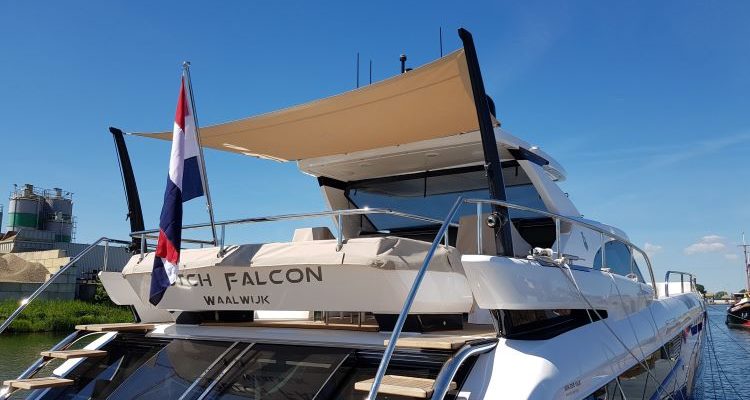“Because the sunshade on this yacht was large, the bimini poles were getting quite big and the customer couldn’t use traditional aluminum ones,” says Bouwmeester. “They asked us to design something quite specific to fit the yacht – a particular shape and with lots of integrated cables used to tension the sunshade.” Fiberneering 3D-printed two cores, then co-cured them with carbon fiber prepreg for a set of 1.5-meter long poles. Since then, the company has also produced two larger sets of bimini poles, the longest ones close to 2 meters, for other yachts.
Bouwmeester says Fiberneering’s two-step process is much different than other additive manufacturing techniques, such as extrusion (also known as fused filament fabrication). With extrusion, a continuous thermoplastic filament is fed from a coil through a heated printer extruder head and deposited in two planes, first horizontally and then vertically, to create the part.
“Although I really like the technology, you get different types of products [with extrusion] than with FRP3D,” says Bouwmeester. “You get unidirectional fibers, which is fine for products with a single load path.” He says that Fiberneering’s two-step technology allows for multidirectional laminates.
Another difference between traditional additive manufacturing for composites and Fiberneering’s method is the fiber volume. “Because extrusion uses a fiber that’s pre-impregnated in a thermoplastic matrix, the resin content is high and the fiber content is low,” says Bouwmeester. “The properties are akin to a nylon with increased stiffness due to the fiber, which is great for some applications. But the applications we are targeting require the same properties as traditionally manufactured composites.”
To achieve those properties, parts require multidirectional fibers and a high fiber content. “Those are the things we can control using our two-step approach,” says Bouwmeester. “We get the benefits of 3D printing in freedom of shape and properties of the core, added to the mechanical properties of composites.”
Bouwmeester says Fiberneering’s process is well-suited to automotive applications that require production of 20 to 50 parts per day or a few thousand in total. He also believes that aerospace could benefit from FRP3D, particularly for interior panels in aircraft that currently incorporate honeycomb sandwich materials.
Wherever honeycomb sandwiches have cut-outs or connections, they are closed off with potting material, which adds a lot of weight, says Bouwmeester. “We can create a core that has very similar structural properties to honeycomb, but we can make allowances for the cut-outs and close off the edges during printing,” he says. “In addition, we can use open cell structures so there’s no risk of moisture entrapment in the panels. That’s a huge potential benefit for aviation applications.”
Bouwmeester acknowledges that Fiberneering’s technology isn’t a universal solution for all 3D-printed projects. Nor does he believe additive manufacturing is going to take over the entire composites manufacturing landscape. “Some people promote 3D printing as a solution to everything. I’m not one of those people,” he says. “But I see our technology as an opportunity to do some smart things with composites.”


